On Saturday we took a day trip to Mainz, a cathedral city about an hour and a half southeast of our place in Bornheim. David really enjoyed the drive, as it was on the famous Autobahn the entire way. We drove along at about 85 mph most of the time, with people whizzing by us in the fast lane at 120 mph! It didn't feel very scary, though, since (knock on wood) German drivers seem to pay attention and do obey the speed limit when there is one.
In Mainz, we finally found a paid parking in a garage beneath the Hilton hotel and as we walked towards the cathedral in the freezing cold we saw a few snow flurries. Mainz is a large city and its main attractions are the big, red Romanesque cathedral, a church with windows by Marc Chagall, and several good museums including the Gutenberg Museum. Below are a few photographic highlights.

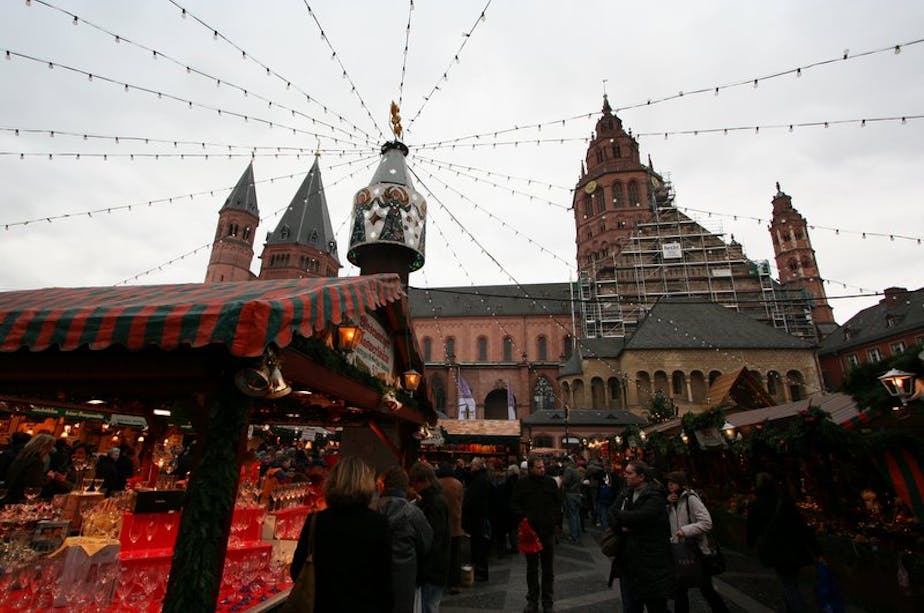

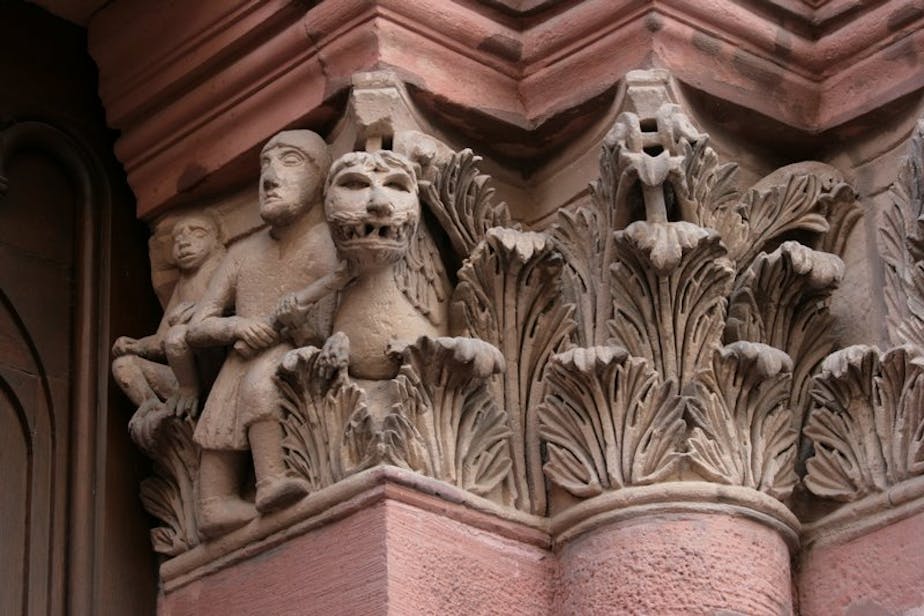
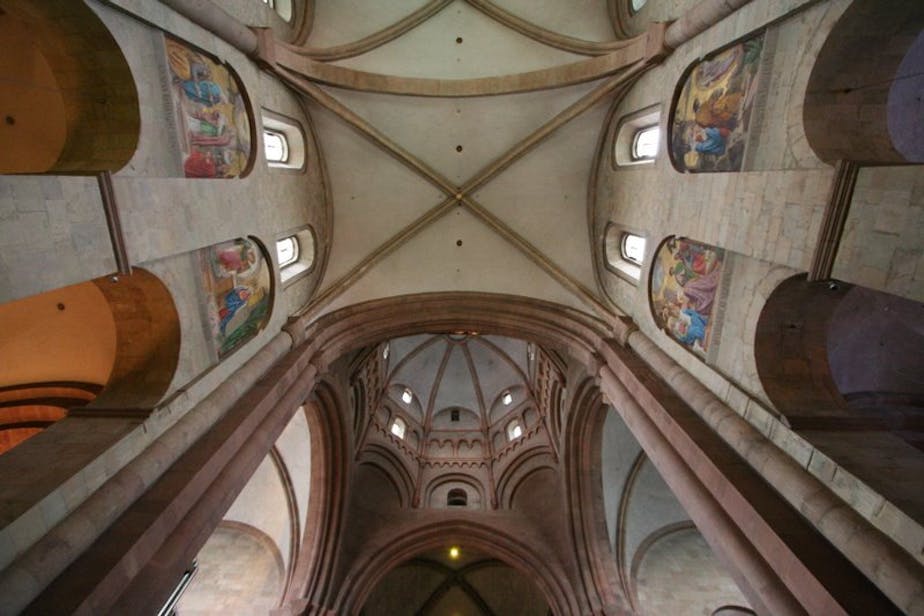
The cathedral was a bit of a disappointment despite being my beloved Romanesque. Neither of us are big fans of red stone, it was very dark inside which made pictures difficult, there weren't many decorations of interest, and the side chapels were filled with the not-terribly-interesting tombs of archbishops.
But it was still worth the visit thanks to the cathedral museum, which is housed in two large rooms off the cloisters. We had the whole place to ourselves and everything was well-lit and nicely labeled (although in German only).
The lower room was a cellar built in the 11th century and it had the oldest artifacts - stones, sculptures, and paintings from Roman times to the 13th century. The upper level held paintings and sculptures from the 14th century to the present. Many of the artworks were originally from the cathedral and of very high quality.
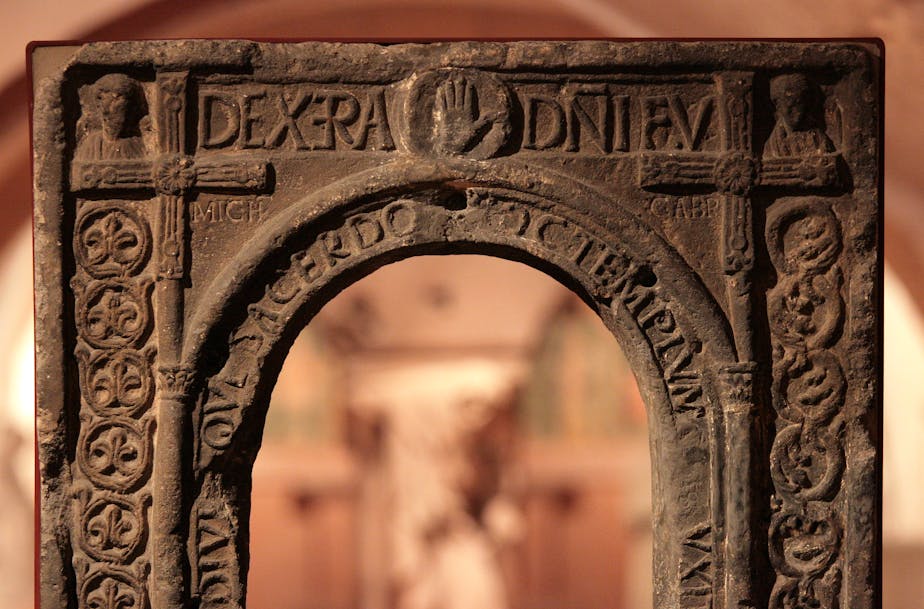
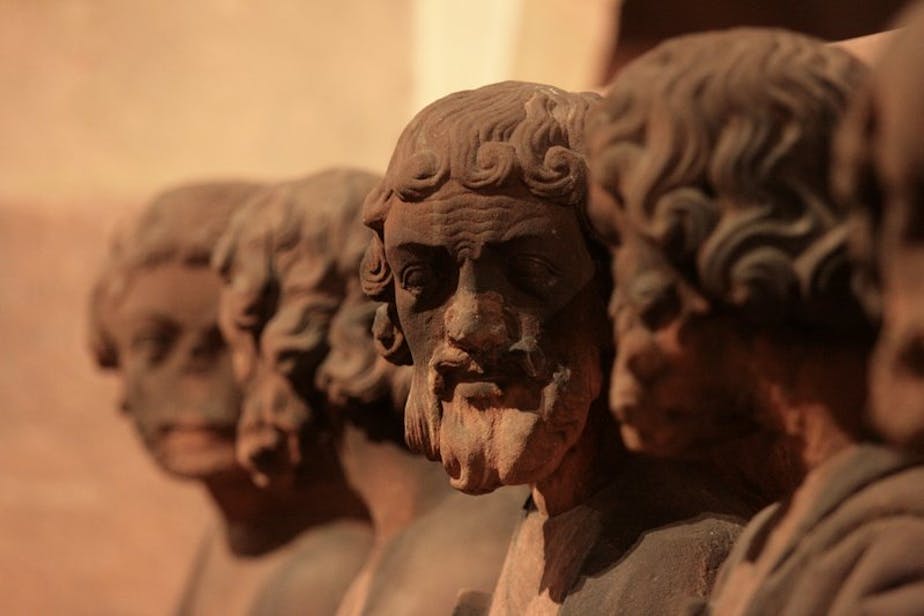



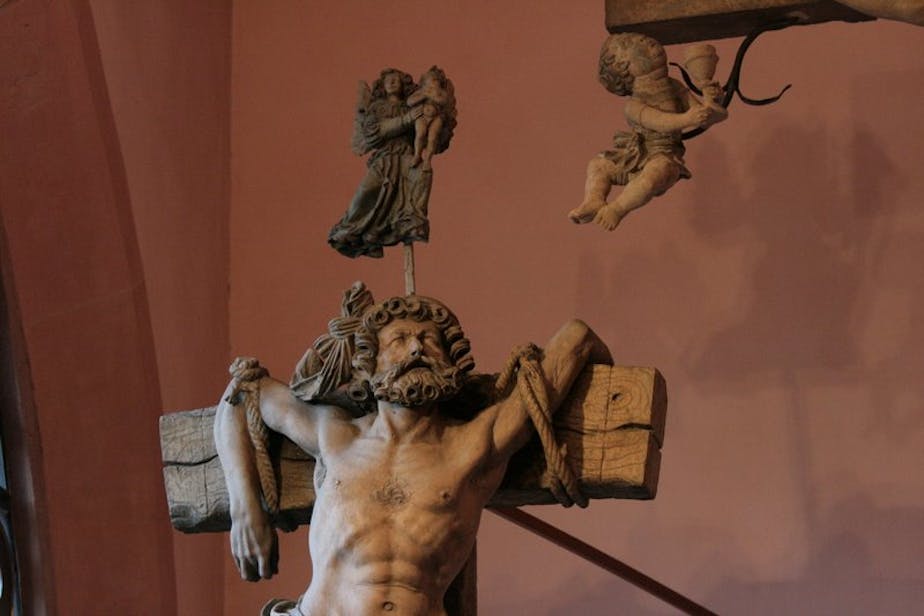

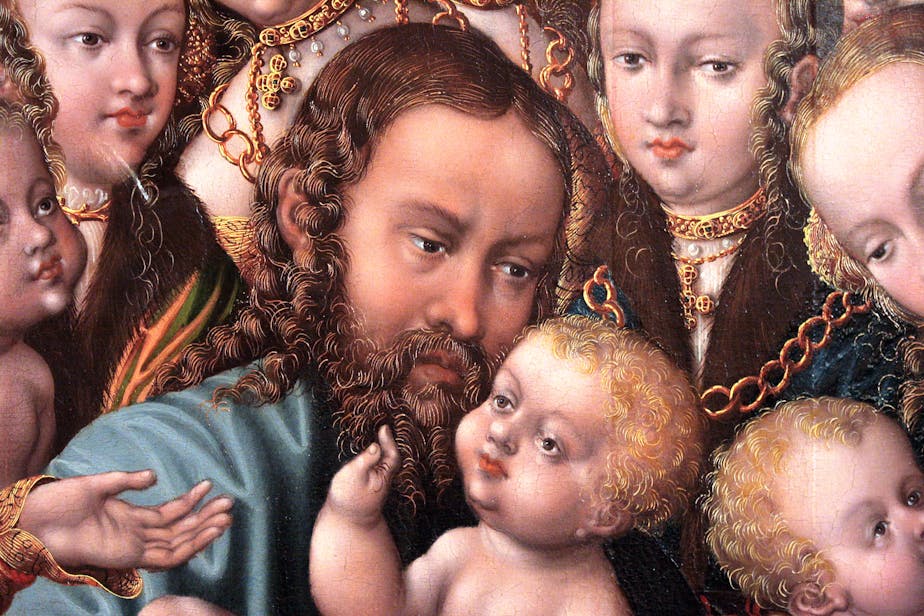
Then it was a short uphill walk from the cathedral to St. Stephen's Church, where the main attraction is stained glass from 1978-85 by Marc Chagall. These were some of the last windows created by the famous modern artist, who was in his nineties at the time. The windows mainly depict biblical scenes, but their overall theme is said to be reconciliation between Jews and Christians and between France and Germany. (Chagall was Jewish and lived in France.)


Our final stop was the Gutenberg Museum, which we toured quickly just before closing. It was surprisingly cheap (only 3 euros each) and had five floors full of exhibits related to Gutenberg and printed books. Definitely worth a stop should you find yourself in Mainz.

Johannes Gutenberg (1400-68) was from Mainz and is famous for inventing a printing press that used movable type. It revolutionized printing and allowed books to be quickly and widely published. This was a timely invention for Martin Luther, who came along in the next century - it allowed him to quickly distribute copies of his German Bible, sermons and propaganda. I remember from church history exams that "Gutenberg's movable type" is considered one of the main factors in Luther's success.

The earliest printed books were made to look like the manuscripts they replaced and were very beautiful. The most famous of these early books was the Gutenberg Bible, printed in 1455. Being pre-Luther, it is in Latin, and around 180 copies were produced.
As the inventor's hometown, Mainz proudly owns the two earliest copies, which are in a vault in the center of the second floor of the Gutenberg Museum. The vault was really something, with metal doors two feet thick and a glass display box with wires embedded in it everywhere. David was really impressed. The Bibles were beautiful, with perfectly uniform text patterned after manuscript calligraphy, enhanced by hand-painted letters at the start of each chapter.
Another highlight of the museum was the collection of printing machines, which included examples from Gutenberg's time to modern newspaper presses. Some of those from the 19th century were beautifully decorated as a marketing technique.
